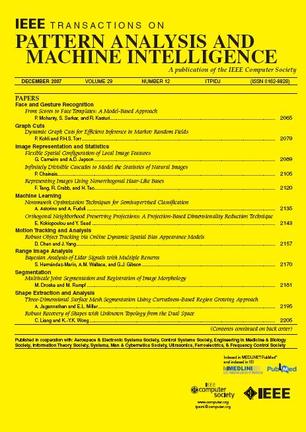语义图像分割的领域自适应和可泛化网络架构和训练策略
IF 20.8
1区 计算机科学
Q1 COMPUTER SCIENCE, ARTIFICIAL INTELLIGENCE
IEEE Transactions on Pattern Analysis and Machine Intelligence
Pub Date : 2023-04-26
DOI:10.48550/arXiv.2304.13615
引用次数: 0
摘要
无监督域自适应(UDA)和域泛化(DG)使在源域上训练的机器学习模型能够在未标记甚至看不见的目标域上表现良好。由于以前的UDA&DG语义分割方法大多基于过时的网络,我们对更新的架构进行了基准测试,揭示了Transformers的潜力,并为UDA&DG设计了DAFormer网络。它通过三种训练策略来避免对源域的过度拟合:(1)稀有类采样减轻了对常见源域类的偏见,(2)事物类ImageNet特征距离和(3)学习率预热促进了ImageNet预训练的特征转移。由于UDA和DG通常占用GPU内存,因此以前的大多数方法都会缩小或裁剪图像。然而,低分辨率预测往往无法保留精细的细节,而用裁剪图像训练的模型在捕捉长距离、领域鲁棒的上下文信息方面做得不够。因此,我们提出了一种用于UDA&DG的多分辨率框架HRDA,它结合了小的高分辨率裁剪的优势来保留精细的分割细节,以及大的低分辨率裁剪的优点来捕获具有学习尺度注意力的长程上下文依赖性。DAFormer和HRDA在5个不同的基准上将最先进的UDA和DG显著提高了10 mIoU以上。该实施可在https://github.com/lhoyer/HRDA.本文章由计算机程序翻译,如有差异,请以英文原文为准。
Domain Adaptive and Generalizable Network Architectures and Training Strategies for Semantic Image Segmentation
Unsupervised domain adaptation (UDA) and domain generalization (DG) enable machine learning models trained on a source domain to perform well on unlabeled or even unseen target domains. As previous UDA&DG semantic segmentation methods are mostly based on outdated networks, we benchmark more recent architectures, reveal the potential of Transformers, and design the DAFormer network tailored for UDA&DG. It is enabled by three training strategies to avoid overfitting to the source domain: While (1) Rare Class Sampling mitigates the bias toward common source domain classes, (2) a Thing-Class ImageNet Feature Distance and (3) a learning rate warmup promote feature transfer from ImageNet pretraining. As UDA&DG are usually GPU memory intensive, most previous methods downscale or crop images. However, low-resolution predictions often fail to preserve fine details while models trained with cropped images fall short in capturing long-range, domain-robust context information. Therefore, we propose HRDA, a multi-resolution framework for UDA&DG, that combines the strengths of small high-resolution crops to preserve fine segmentation details and large low-resolution crops to capture long-range context dependencies with a learned scale attention. DAFormer and HRDA significantly improve the state-of-the-art UDA&DG by more than 10 mIoU on 5 different benchmarks. The implementation is available at https://github.com/lhoyer/HRDA.
求助全文
通过发布文献求助,成功后即可免费获取论文全文。
去求助
来源期刊
CiteScore
28.40
自引率
3.00%
发文量
885
审稿时长
8.5 months
期刊介绍:
The IEEE Transactions on Pattern Analysis and Machine Intelligence publishes articles on all traditional areas of computer vision and image understanding, all traditional areas of pattern analysis and recognition, and selected areas of machine intelligence, with a particular emphasis on machine learning for pattern analysis. Areas such as techniques for visual search, document and handwriting analysis, medical image analysis, video and image sequence analysis, content-based retrieval of image and video, face and gesture recognition and relevant specialized hardware and/or software architectures are also covered.

 求助内容:
求助内容: 应助结果提醒方式:
应助结果提醒方式:


